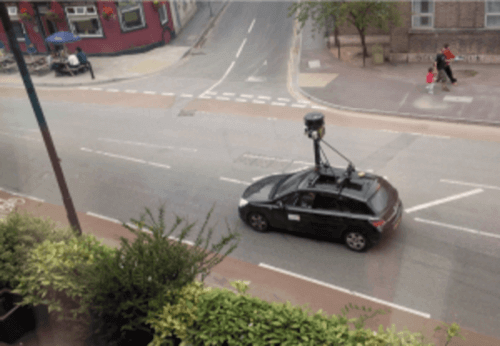On its European Public Policy Blog (yeah, there’s one), Google spent some column-inches explaining how and why it runs around in special cars spying on you in the shower. Officially known as the “Google Street View Cars,” they zip about gathering, “photos, local WiFi network data and 3-D building imagery.”

Here is how Google’s Global Privacy Counsel, Peter Fleischer, laid out the company’s use of the various types of information.
- Photos: so that we can build Street View, our 360 degree street level maps. In addition, we use this imagery to improve the quality of our maps, for example by using shop, street and traffic signs to refine our local business listings and travel directions.
- WiFi network information: which we use to improve location-based services like search and maps.
- 3-D building imagery: we collect 3D geometry data with low power lasers (similar to those used in retail scanners) which help us improve our maps.
He pointed out, repeatedly, that TeleAtlas and Bing (as well as something called the Fraunhofer Institute, Skyhook* and NavTeq) harvest similar information. For those concerned with excessive gathering of invasive personal information, or aggregated information that can, with massaging, become invasive, I’m not sure the fact that others are doing it will be terribly comforting.
The major fear seems to be using technical data to link geographical data with personal locations. However the information Google pulls, including SSID (the network name) and the MAC address (device number) cannot currently be linked to human identifies without a great deal more effort than Google seems to be putting into it.

As with a lot of privacy thought, it is not so much what is going on now, or what a company, or other agency wants, but what would be possible in the future, given what is being done now.
*Didn’t this thing start the Terminator wars?










